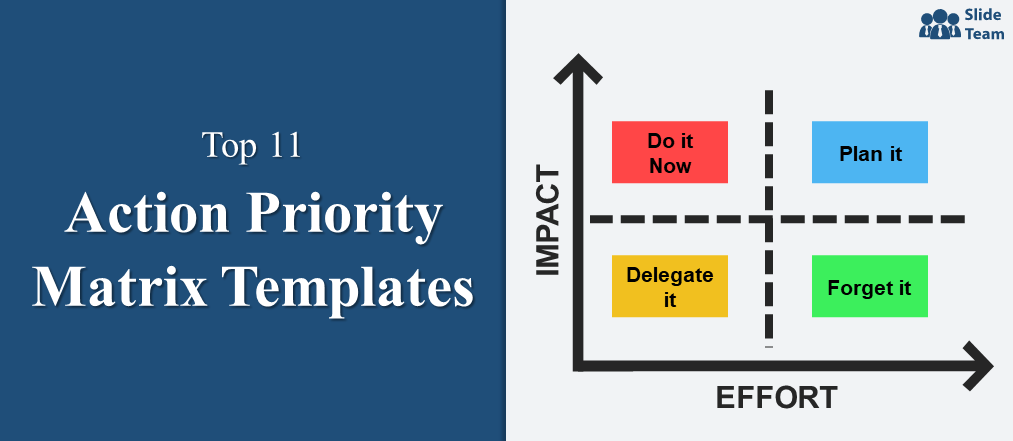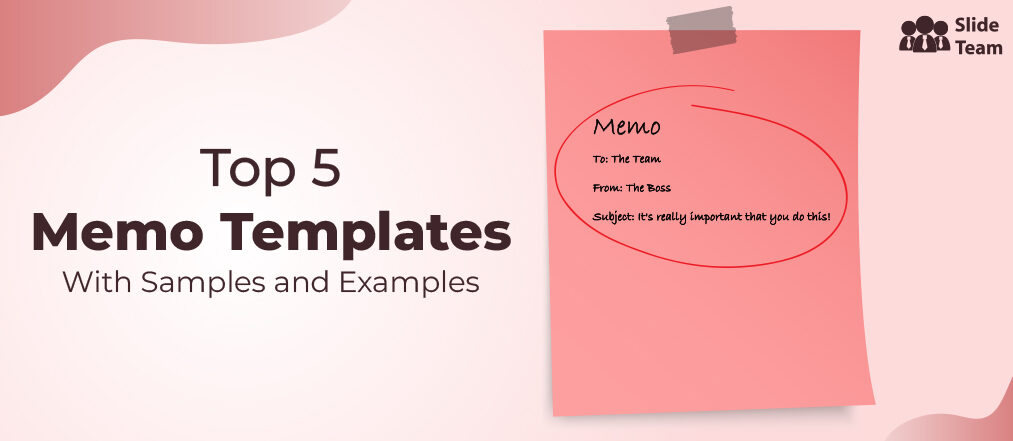The all-pervasive social media presence around businesses today means that brands must be actively present and posting to platforms like Instagram, Facebook, Twitter, etc. At the same time, social media managers need to be alert and thorough about the brand message that they give out. Any negligence could lead to a situation of social media crisis that would hurt business credibility.
Deleting tweets, sharing public apologies would only impress the empathetic ones; the headstrong audience would just leave. Now would you want your social media follower count to plummet, especially at a time when a credibility factor like a blue tick can be easily purchased by any budding competitor of yours? Which is why you need to have proper social media management in place.
Even if a blunder has been committed, an early cover-up could prevent damage to your brand image. Timely escalation and corrective action followup planning are other ways you could prevent unnecessary pain for your brand. To ensure this timely action, all you need is a social media crisis management plan.
SlideTeam has just the ideal set of social media crisis management plan templates for you. With carefully organized templates intended to help you avert as well as deal with inadvertent gaffes, this playbook is just what your social media team needs to operate safer.
Template 1: Social Media Crisis Management Phases
Elaborate on key steps involved in social media crisis management with this PPT Template. Lay down the steps, in order, that lead to resolving the crisis right from identifying it as a pre-crisis stage. List primary tasks under each stage of this five-step process so that every person responsible will know their role in the crisis management in advance.
Template 2: Social Media Crisis Plan with Impact and Mitigation Plan
Identify all crisis events that usually manage to sneak in under the radar and devise their mitigation plan after studying their impact with this next important part of the crisis management plan. For example there could be multi-channel crisis, emerging crisis, industry crisis and fake news that could taint your social media image. Under the heading of every such crisis incident, analyze which among these sources cause the maximum damage and devise plans to mitigate such risks or actions.
Template 3: Strategic Plan to Prevent Social Media Crisis
To prevent a small mistake from blowing up and creating a crisis, strategic planning needs to be a part of your playbook. With this dedicated slide, create a multi-step plan to avert social media crisis. This could include creating a social media policy, protecting social media accounts, establishing social listening programs, and being consistent with hashtag campaigns., etc. This PPT Design of the social media crisis management plan template will help you elaborate this strategic plan with ease.
Template 4: Social Media Crisis Communication Plan with Status
To monitor crisis management of your brand’s social media, it’s important to create a communication plan so that nothing important goes unnoticed. Create a multi-step communication plan to deal with crises and maintain a checklist as you progress on the path. Use this template to even comment that can impact the next steps. Thus you can coordinate efforts and ensure crisis resolution happens swiftly.
Template 5: Major Reasons Leading to Social Media Crisis Plan
To avoid similar social media crises in the future, it’s important to identify the major reasons that should trigger a crisis management plan. With this PPT Design, you can warn your social media team in advance of the common areas that lead to the problem situation in the first place, such as false comments, vendor criss, customer dissatisfaction etc. Knowing this will help prepare your team in advance to prevent the occurrence of such issues in the first place, and also in responding better to it.
Template 6: Social Media Crisis Management Planning Mistakes
Crisis management is sometimes about hit and trial and trusting the process. The management process may itself suffer from lacunas that need to be addressed. Mistakes such as social media distancing, leaving queries unanswered, being impatient or even unprepared could lead to even greater troubles and issues. Ensure, you record them and point them out while planning a crisis combat plan.
Template 7: Social Media Tools Engaged with Crisis Management Plan
With this next slide, focus on social media tools that could alleviate the crises at hand. List tools by type such as social networking, blogs, Q&A sessions and channels as Twitter, Facebook, WordPress, etc. Following this, you can elaborate on its applicability during the crisis in concise form.Ensure that this informative slide is necessarily a part of your social media crisis management plan playbook.
Template 8: Social Media Manager Roles and Responsibilities
Prepare social media manager cadets to take you out of trouble in a crisis management situation within this playbook. Guide them on your responsibilities, skills required and other specific Standard Operating Procedures (SOPs) needed under the situation of crisis using this PPT Side. This PPT Layout is used to make everyone aware of their core responsibilities during the crisis.
Template 9: Social Media Crisis Response Communication Plan
Create a diagrammatic plan of the steps to be allowed in the event of a social media crisis. Identify resources and tools to be used and point individuals who are responsible toward the use of these tools at varied steps in the management process. Combine this planning with algorithms so that team members know exactly what to do.
Template 10: Social Media Impact Evaluation Plan on Crisis Resolution
Post planning and execution, it’s important to track the effect of the resolution arrived at for any crisis. With this slide, you can create an impact evaluation plan to point you metrics, track conversation updates, seek feedback, and look for improvement post self-evaluation. Elaborate on these steps as shown and ensure each time a crisis management plan is implemented, it is better and more effective than the last.
Build Social Media Management Etiquettes
Create a valuable guide with our social media crisis management plan template so that your team feels supported and ready to take on any internet mishap.
PS: Explore the potential of digital marketing tools and guide your team on how to handle them better with this guide featuring digital marketing case study templates.
FAQs on Social Media Crisis Management Plan
What is the social media crisis management plan?
A social media crisis management plan is a strategic approach that individuals, organizations, or businesses develop to handle and respond to potential or existing crises on social media platforms. It outlines the steps, procedures, and guidelines to mitigate the negative impact of a crisis, protect the reputation of the entity involved, and regain control of the situation.
Here are its key components:
- Pre-crisis preparation: It includes establishing a social media policy, training the social media team, identifying potential risks and vulnerabilities, and monitoring online conversations to detect early warning signs.
- Crisis identification and assessment: In this, the social media team should monitor platforms for mentions, trending topics, and public sentiment to assess the severity and potential impact of the crisis.
- Crisis response strategy: This includes determining the appropriate tone, messaging, and channels for communication. The plan should outline how to address the crisis promptly, transparently, and empathetically, while staying true to the organization's values.
- Internal communication: The plan should outline who needs to be informed, how internal teams will coordinate their efforts, and how information will be shared in real-time.
- External communication: This details how to respond to enquiries, provide updates, and engage with audience across social media platforms.
- Monitoring and listening: Continuous monitoring of social media channels is essential to gauge public sentiment, identify new issues, and respond to questions or concerns in a timely manner.
- Escalation and delegation: The plan should define levels of escalation and delegation, determining who has the authority to make decisions during a crisis and when to involve higher management or legal experts.
- Post-crisis evaluation: This includes analyzing social media metrics, collecting feedback, identifying lessons learned, and implementing improvements to the crisis management plan.
What are the five steps to managing a social media crisis?
Here are five general steps to managing a social media crisis:
- Identify and assess the crisis: Monitor your social media channels, news feeds, and relevant online platforms to detect any negative mentions, complaints, or trending topics that could potentially harm your reputation. Assess the severity and impact of the crisis to determine the appropriate response.
- Respond promptly and transparently: Acknowledge the issue publicly and address it with transparency and empathy. Apologize, if necessary, and provide accurate information to the best of your ability.
- Take the conversation offline if necessary: While it's important to address the crisis publicly, some situations may require moving the conversation to a more private and controlled environment. If the matter involves sensitive or personal information, encourage affected individuals to reach out via direct message, email, or a dedicated customer support channel.
- Monitor and engage with stakeholders: Engage with stakeholders, including affected customers, by responding to their queries , addressing their concerns, and providing regular updates. Actively listen to feedback and adjust your response strategy accordingly to demonstrate that you value their input.
- Learn and improve: Analyze the effectiveness of your response, gather feedback from stakeholders, and identify areas for improvement. Incorporate these learnings into your crisis management plan to prepare for future incidents and strengthen your organization's resilience.
How do you create a social media crisis management plan?
Creating a social media crisis management plan involves a systematic approach to prepare for and effectively handle crises that may arise on social media platforms. Here are the steps to create a comprehensive plan:
- Identify potential crises: Consider factors such as product/service issues, customer complaints, data breaches, negative publicity, social media hacks, or employee misconduct. Conduct a risk assessment to identify vulnerabilities and prioritize potential crises based likelihood and potential impact.
- Assemble a crisis management team: Form a dedicated crisis management team that includes representatives from departments, such as public relations, marketing, legal, customer service, and social media management. Assign clear roles and responsibilities to each team member to ensure efficient coordination during a crisis.
- Establish a communication protocol: Define a communication protocol that outlines how the crisis management team will communicate internally and externally. Specify the channels to be used, escalation processes, and roles responsible for authorizing and approving messages.
- Develop pre-approved messaging: These templates should include general statements, apologies, corrective actions, and key talking points. While templates provide a foundation, they should be adaptable to specific situations. Respond to different scenarios, with the same brand voice.
- Set up monitoring and early detection systems: Implement social media monitoring tools to track mentions of your organization, brand, and key personnel. Monitor relevant hashtags, keywords, and industry trends to identify potential crises early on. Set up alerts and notifications to be promptly informed about any emerging issues.
- Establish response guidelines: Include response times, steps for gathering accurate information, and protocols for handling different types of crises.
- Train the crisis management team: Conduct comprehensive training sessions to ensure that all team members are familiar with the social media crisis management plan. Train them on identifying crises, using social media monitoring tools, implementing the response guidelines, and handling communication effectively. Regularly update the team on new trends and best practices in social media crisis management.
- Conduct simulations and rehearsals: Simulate crisis scenarios and conduct rehearsals with the crisis management team to practice their response capabilities.
- Continuously review and update the plan: Stay informed about emerging platforms, technologies, and potential risks that may impact your organization. Incorporate lessons learned from real crises and feedback from stakeholders to refine and enhance your plan.
How to overcome a social media crisis?
Overcoming a social media crisis requires a strategic and proactive approach. Here are some steps to help you navigate and overcome a social media crisis:
- Act swiftly: Time is of the essence when dealing with a social media crisis. Respond quickly and decisively to address the situation. Delaying or ignoring the issue can allow it to escalate and further damage your reputation.
- Stay calm and composed: Maintain a professional and empathetic tone in your responses, focusing on providing accurate information and resolving the concerns raised.
- Gather accurate information: Before responding, gather all the necessary facts and accurate information related to the crisis. Make sure you have a complete understanding of the situation to provide clear and informed responses. Avoid speculating or sharing unverified information, as it can further exacerbate the crisis.
- Apologize and take responsibility: If your organization has made a mistake or if there has been a genuine issue, apologize sincerely and take responsibility for the situation. Demonstrating accountability and empathy can help rebuild trust with your audience.
- Communicate openly and transparently: Transparency is crucial during a social media crisis. Keep your audience informed about the steps you are taking to address the situation. Provide regular updates on the progress made and any measures implemented to prevent similar issues in the future. Open communication can help rebuild trust and alleviate concerns.
- Personalize responses: Treat individuals affected by the crisis as individuals, not just faceless entities. Personalize your responses whenever possible by addressing people by name and directly addressing their concerns.
- Monitor and engage: Continuously monitor social media platforms and other relevant channels for new developments and conversations related to the crisis. Respond promptly to comments, messages, and inquiries to show that you are actively engaged and committed to resolving the issue. Actively listen to feedback and address concerns in a timely manner.
- Learn and improve: After the crisis has subsided, conduct a thorough evaluation of the situation.
What is a social media strategic plan?
A social media strategic plan is a comprehensive document that outlines the goals, objectives, and tactics for an organization's social media presence. It serves as a roadmap for effectively utilizing social media platforms to achieve specific business objectives and engage with the target audience.
A well-developed social media strategic plan includes the following components:
- Goals and objectives: Clearly define the overarching goals and objectives that the organization aims to achieve through social media. These goals can range from increasing brand awareness, driving website traffic, generating leads, fostering customer engagement, improving customer service, or establishing thought leadership.
- Target audience and personas: Identify the specific target audience that the organization wants to reach and engage with through social media. Develop audience personas to gain a deeper understanding of their demographics, interests, preferences, and behavior.
- Platform selection: Determine the social media platforms that align with the target audience and the organization's goals. Consider factors such as user demographics, platform features, and the organization's capacity to effectively manage and engage on each platform. Focus on platforms where the target audience is most active and receptive to the organization's message.
- Content strategy: Develop a content strategy that outlines the types of content to be created and shared on social media.
- Brand voice and guidelines: Establish a consistent brand voice and tone for social media communication. Define the guidelines for creating and sharing content, ensuring it aligns with the organization's brand identity and values. These guidelines should cover aspects such as language style, visual aesthetics, and appropriate use of hashtags, mentions, and emojis.
- Engagement and community management: Define the approach for engaging with the social media audience. Establish guidelines for responding to comments, messages, and mentions in a timely and appropriate manner. Develop strategies to foster a sense of community, encourage user-generated content, and actively participate in relevant conversations.
- Metrics and measurement: Determine the key performance indicators (KPIs) and metrics that will be used to evaluate the effectiveness of the social media strategy. These metrics can include reach, engagement, conversions, click-through rates, sentiment analysis, and customer satisfaction.
- Resource allocation and budget: Allocate the necessary resources, including personnel, time, and budget, to execute the social media strategy effectively. Determine the roles and responsibilities within the social media team and ensure that they align with the defined objectives and tactics. Allocate a budget for content creation, advertising, tools, and other necessary resources.
- Monitoring and evaluation: Continuously monitor social media performance, track the progress towards goals, and evaluate the effectiveness of the social media strategy.


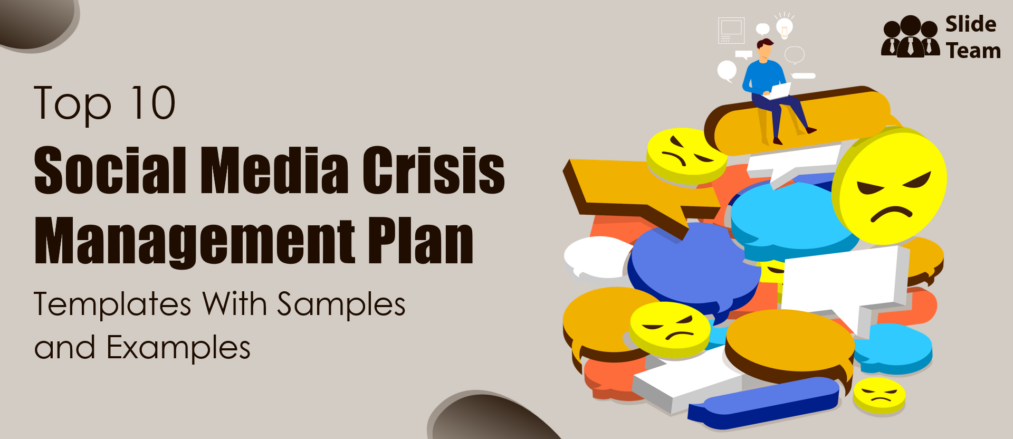


 Customer Reviews
Customer Reviews

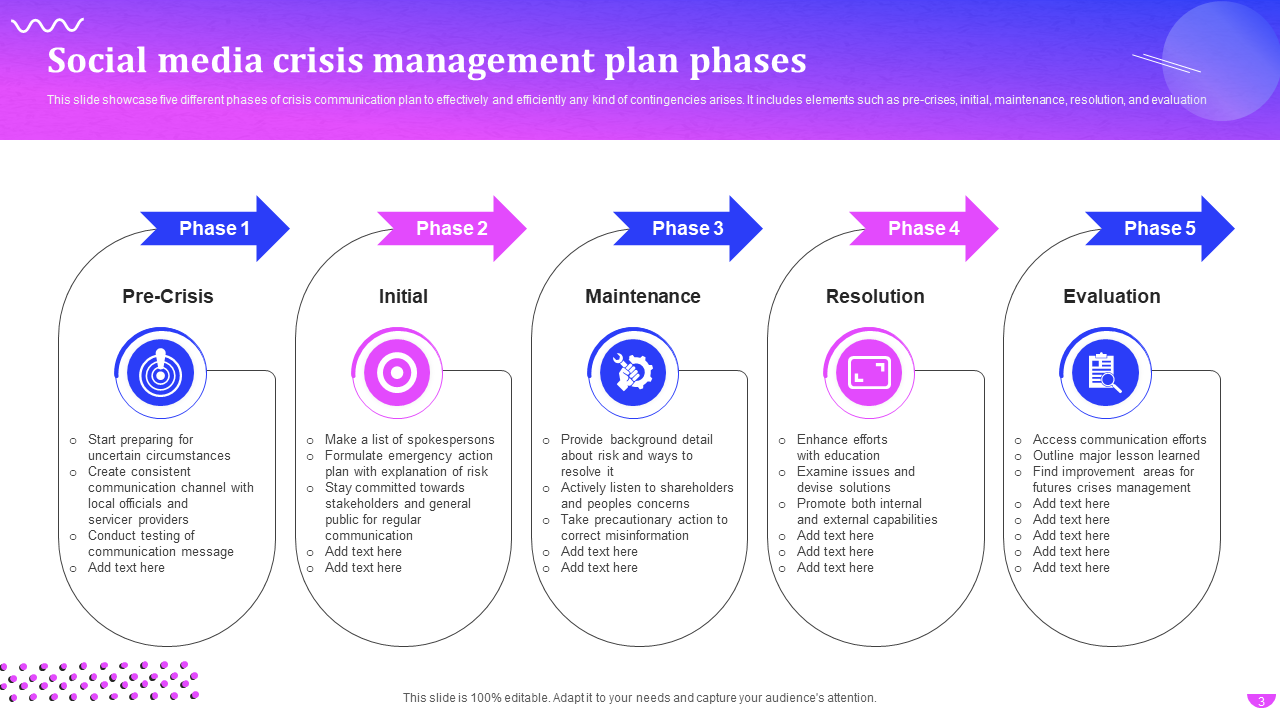
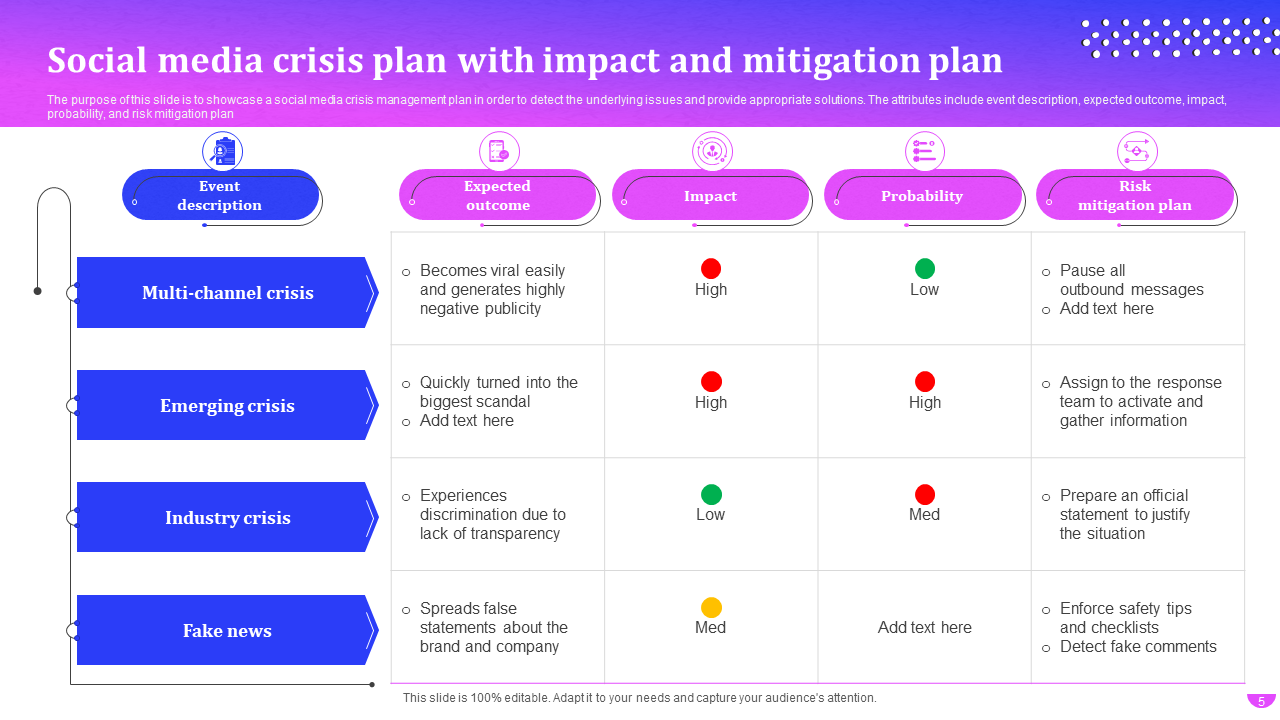
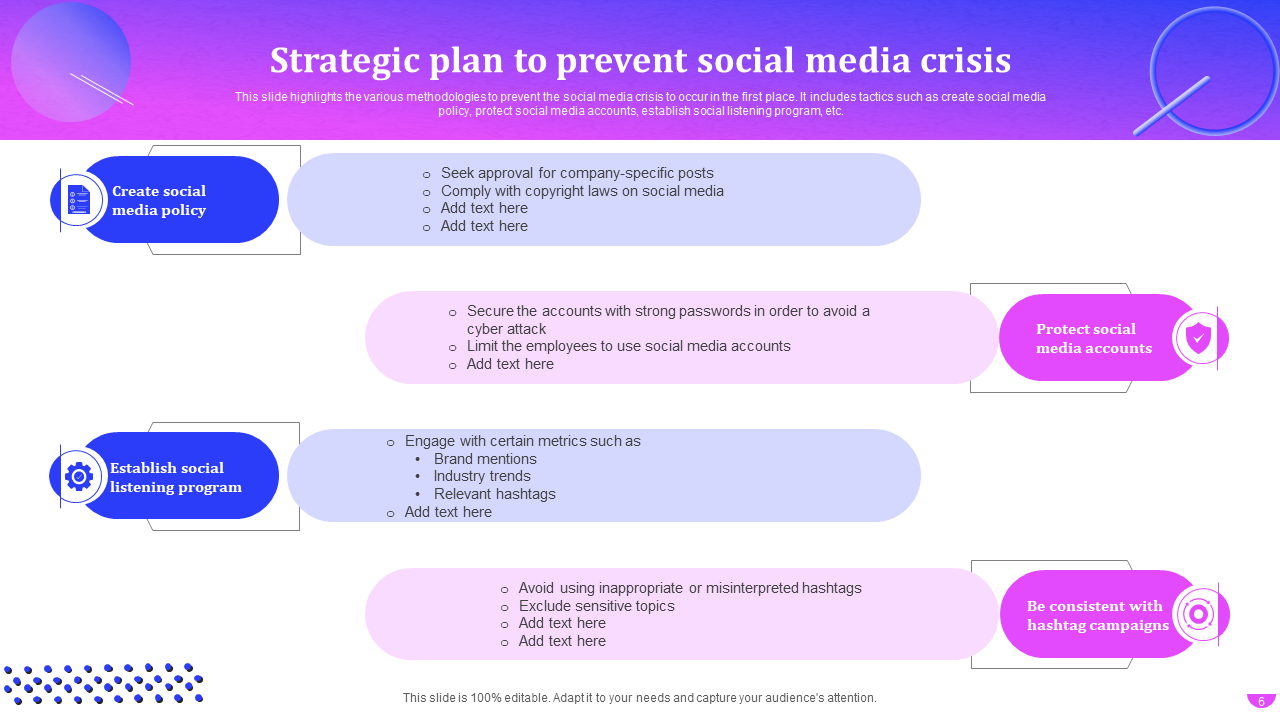
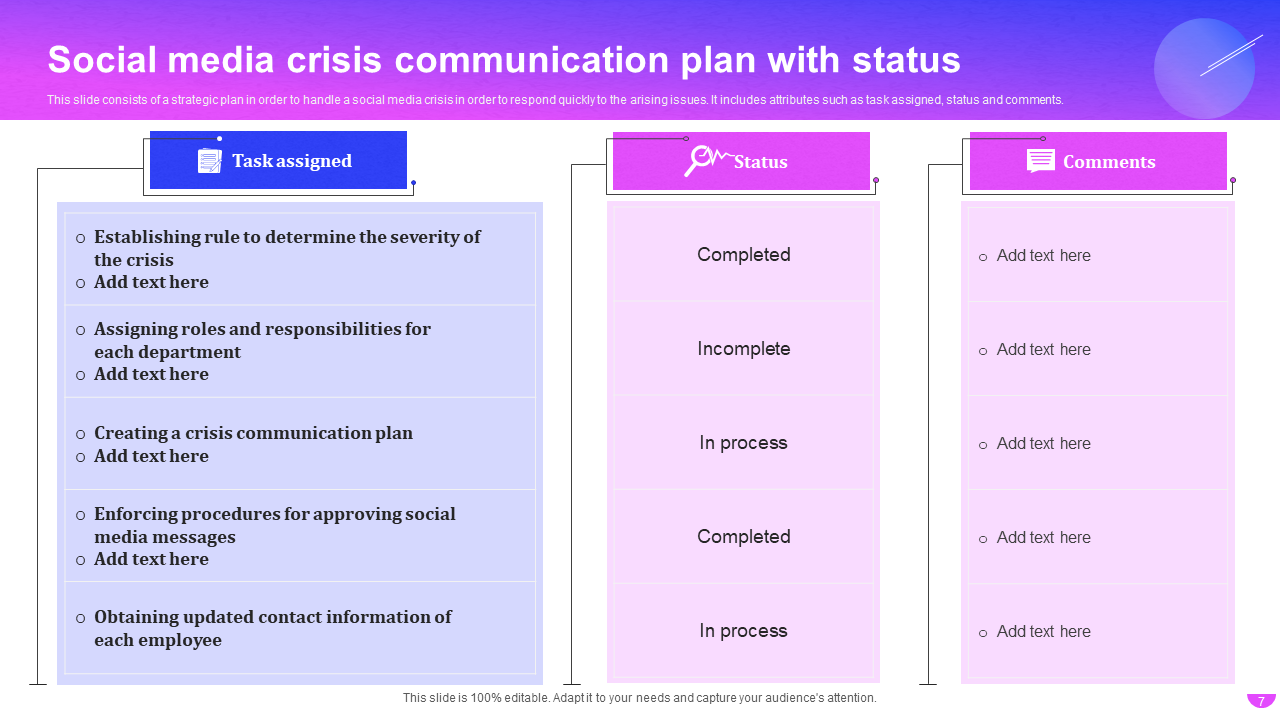
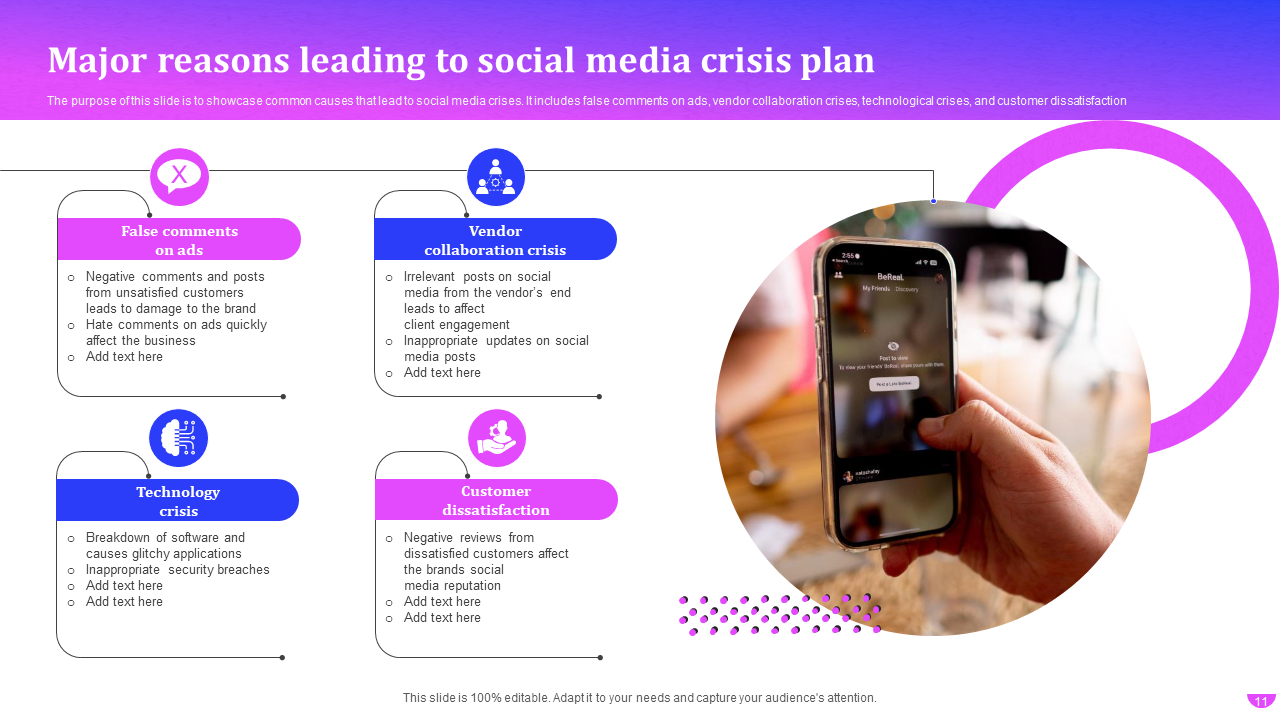
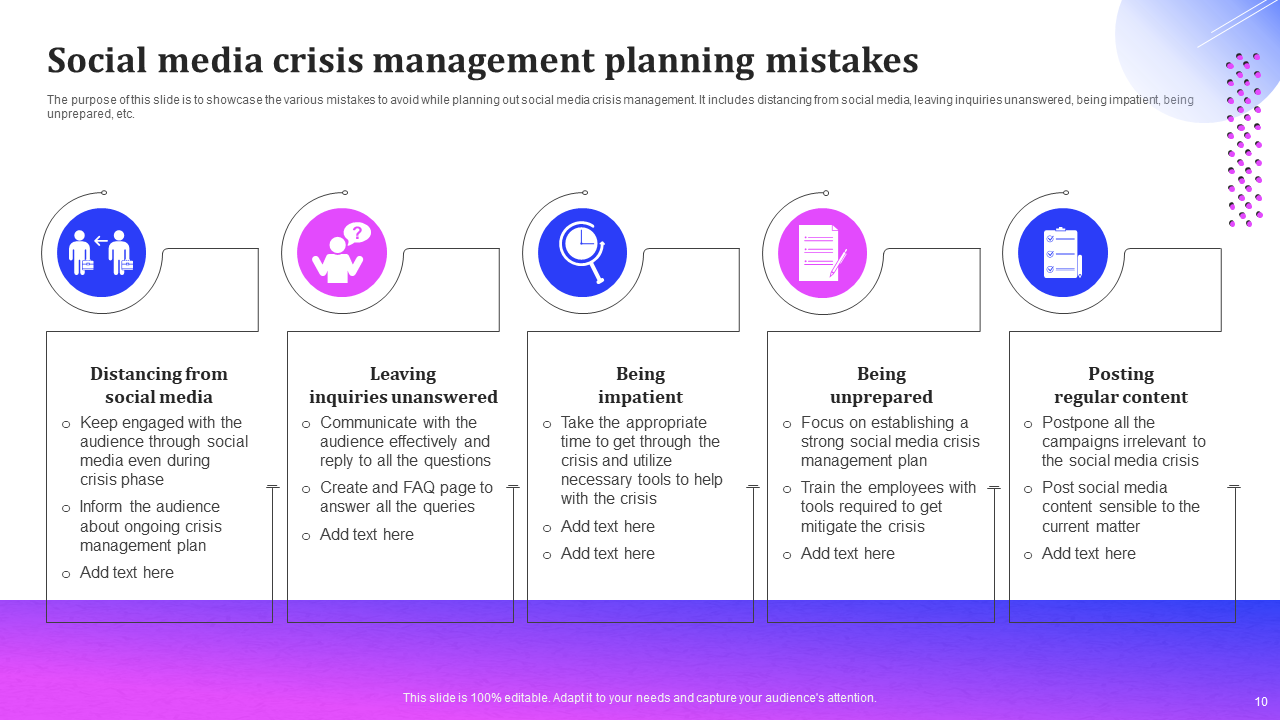
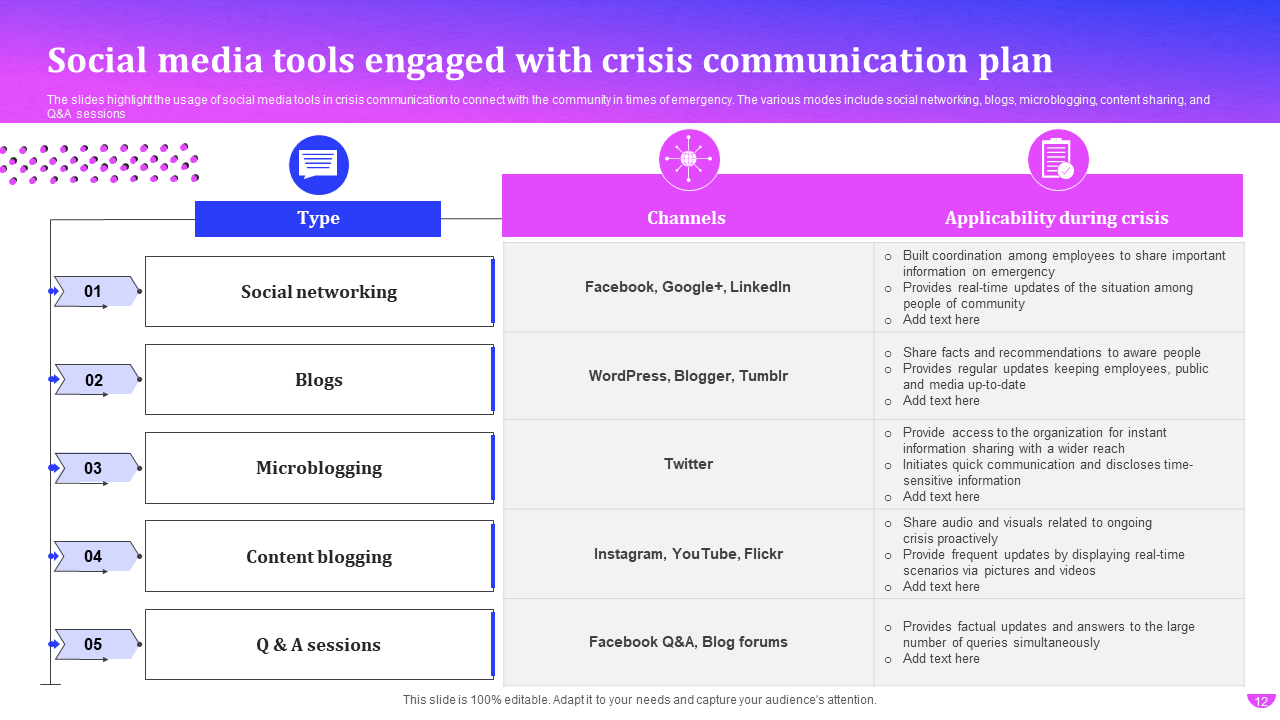
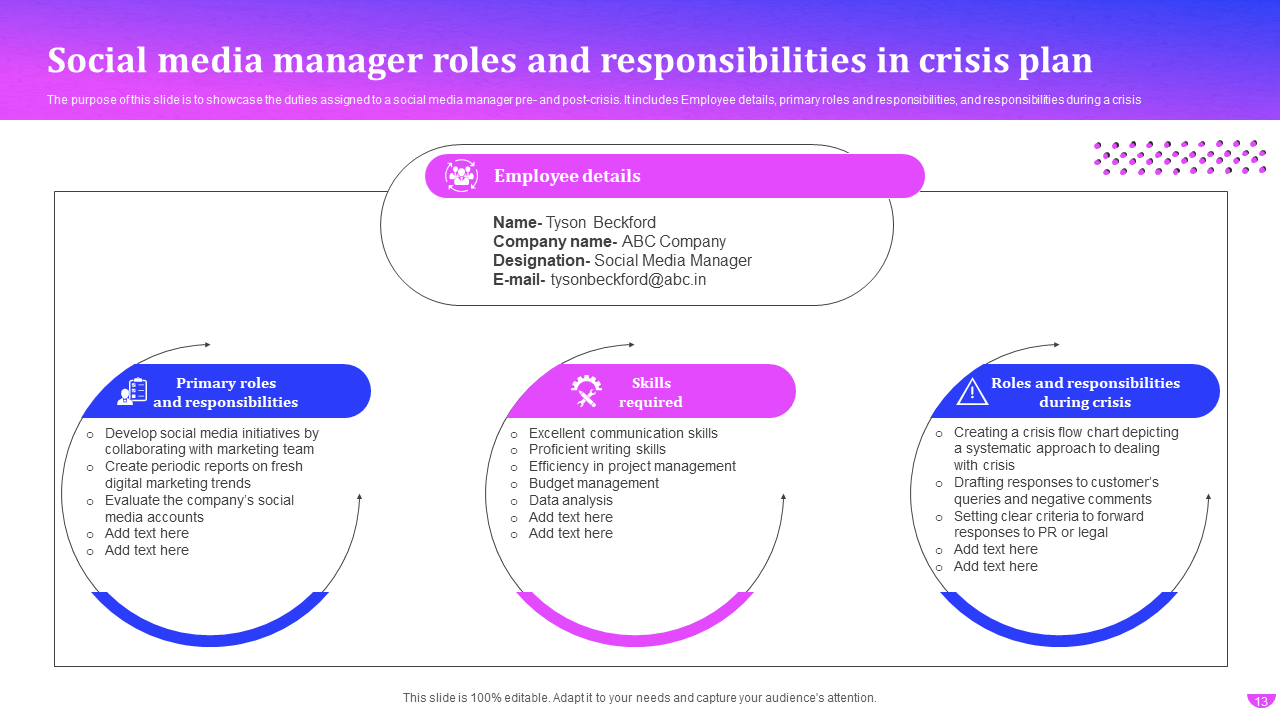
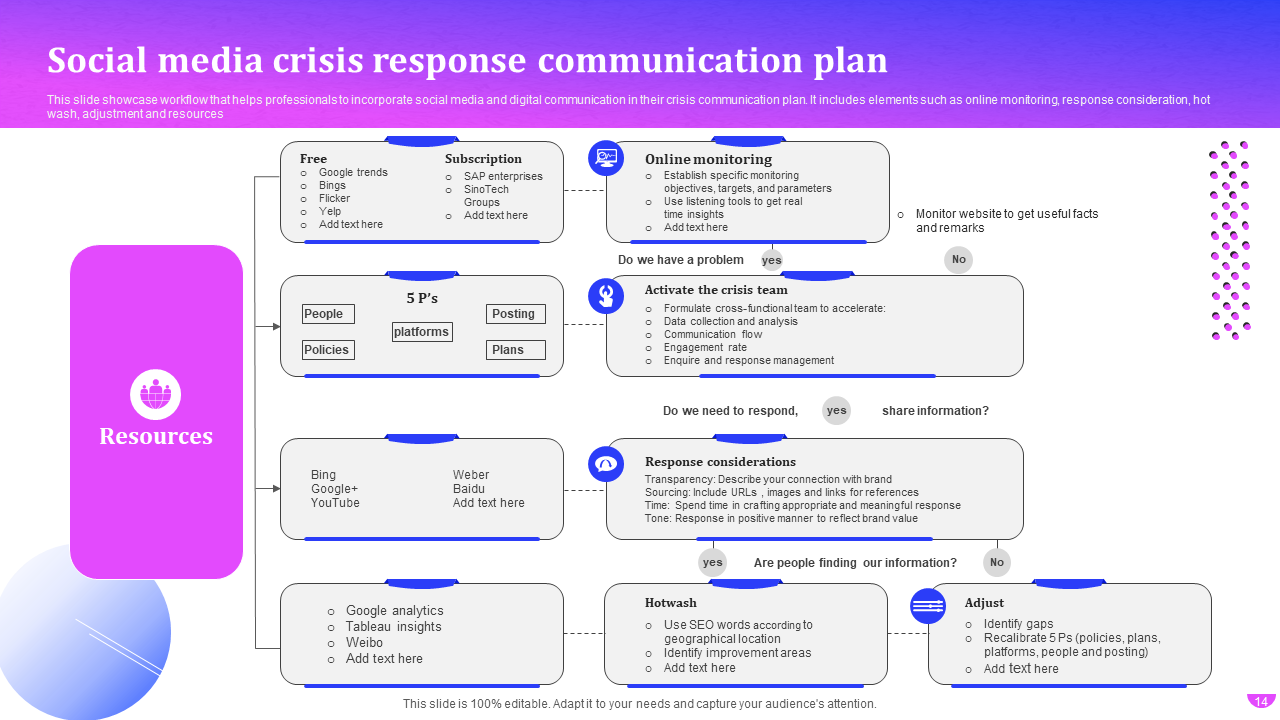
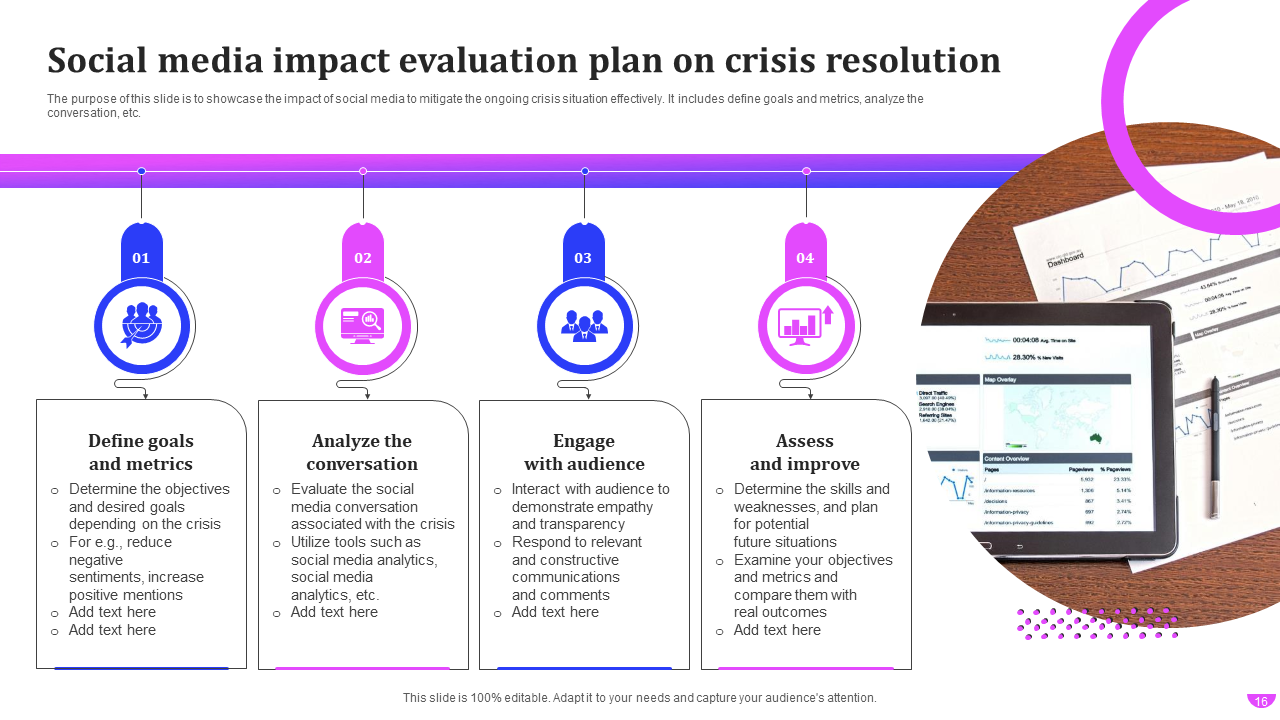




![Porter's Five Forces Model to Convert Adversities Into Opportunities [Best Templates Included] [Free PDF Attached]](https://www.slideteam.net/wp/wp-content/uploads/2022/02/1013x441no-button-13-1013x441.jpg)
![10 Best Digital Marketing Case Study Templates to Highlight Your Unique and Rewarding Strategies [Free PDF Attached]](https://www.slideteam.net/wp/wp-content/uploads/2022/05/1013x441no-button-1-2-493x215.gif)
